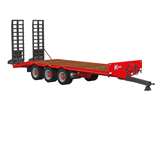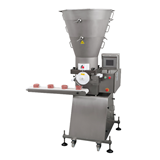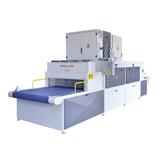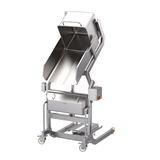Compare spiral conveyor prices in Australia. Find top types, features, installation tips, and compliance advice to make smart buying decisions.
Key takeaways
- Pricing for spiral conveyors in Australia generally ranges from $5,000 to over $40,000, depending on height, load capacity, materials, and speed.
- Types include incline/decline, accumulation, and dual-lane spiral conveyors, each designed for specific throughput and spatial efficiency needs.
- Materials matter — stainless steel models cost 20–30% more than mild steel, but are essential for food, beverage, and pharmaceutical compliance.
- Maintenance costs typically fall between $1,500 and $4,000 per year, influenced by system complexity and usage frequency.
- Financing options such as equipment loans or lease-to-own agreements are widely available in Australia, with rates starting from 7% p.a. for eligible SMEs.
- Warranties usually cover 12–24 months, with extended coverage available for an additional 5–10% of the purchase price.
- Compliance with AS 4024 (Safety of Machinery) and WHS Regulations is mandatory for legal and safe installation in Australian workplaces.
Introduction: Why spiral conveyors are a smart investment
Spiral conveyors have become a cornerstone in Australian logistics, manufacturing, food processing, and packaging industries. With increasing demands for efficient vertical movement of goods, these space-saving systems offer a compelling mix of performance, reliability, and return on investment. Whether you’re managing a warehouse, bottling plant, or distribution centre, choosing the right spiral conveyor can significantly impact productivity and workflow optimisation.
This comprehensive buying guide will walk you through everything you need to know—from pricing and types to operation, maintenance, warranties, compliance, and FAQs—so you can make the most informed decision when purchasing a spiral conveyor in Australia.
Types of spiral conveyors
Understanding the different types of spiral conveyors is essential to ensure optimal fit for your application:
Incline and decline spiral conveyors
- Move products vertically up or down with minimal floor space.
- Ideal for packaging lines, sortation systems, and mezzanine integration.
Accumulation spiral conveyors
- Temporarily hold products in a queue without stopping upstream operations.
- Suitable for high-speed environments where buffering is needed.
Dual-lane spiral conveyors
- Allow two lanes of product movement—either in the same or opposite directions.
- Maximise throughput without increasing footprint.
Custom spiral conveyors
- Designed with specific height, diameter, incline angle and belt width.
- Used in high-care environments (e.g. food, pharmaceuticals) with stainless steel builds and washdown-rated components.
Spiral conveyor prices in Australia
Pricing for spiral conveyors in Australia varies widely depending on factors such as size, material, load capacity, and the level of automation included. Here’s a general breakdown to help you understand the typical cost ranges:
- Compact incline spiral conveyors, which are smaller and designed for light-duty applications, usually start from around $5,000 up to $12,000.
- Standard vertical spiral conveyors, suitable for moderate load capacities and common industrial uses, generally fall within the $12,000 to $25,000 range.
- Stainless steel spiral conveyors, often required in food, pharmaceutical, or hygiene-sensitive environments, typically cost between $18,000 and $30,000, reflecting the premium materials and compliance standards.
- Dual-lane or high-speed spiral conveyor models, which offer higher throughput and specialised configurations, generally start from $30,000 and can exceed $40,000.
- For custom-engineered spiral conveyor solutions tailored to complex site requirements or unusual product types, prices can vary but usually start from around $35,000 and above.
Keep in mind, installation costs are separate and can add an additional $2,500 to $7,000 depending on the complexity of the system, site layout, and integration requirements. This should be factored into your overall budget when planning your purchase.
Operation and usage insights
Spiral conveyors operate on a continuous flow principle using either:
- Slat conveyors (for rigid items and cartons)
- Belt conveyors (for bags or fragile goods)
Performance considerations:
- Speeds typically range from 20 to 60 metres per minute.
- Load capacity can vary from 5 kg to 50 kg per metre, depending on model.
- Inclines are typically set between 8° to 12° for efficient movement.
Spiral conveyors are popular in:
- Warehousing and logistics
- Food and beverage bottling lines
- E-commerce fulfilment centres
- Pharmaceuticals and medical goods manufacturing
Maintenance and parts
Maintaining a spiral conveyor ensures uptime and long-term ROI.
Maintenance checklist
- Monthly: Lubricate bearings and chains (if applicable)
- Quarterly: Inspect slats/belts for wear
- Annually: Replace worn rollers, inspect drive motors
Common replacement parts
- Drive motors: $1,200 – $3,500
- Conveyor slats: $20 – $60 per segment
- Bearings and seals: $100 – $400 per unit
- Belt segments: $500 – $1,200 depending on type
Annual maintenance costs:
Budget $1,500 to $4,000, depending on usage intensity and access to internal technicians.
Financing options in Australia
Spiral conveyors are capital-intensive but essential equipment. Fortunately, there are flexible financing options tailored to Australian SMEs.
Options available
- Equipment leasing: Lower upfront cost, with monthly payments over 2–5 years.
- Chattel mortgage: Own the equipment outright with fixed repayments and GST refund eligibility.
- Hire purchase: Pay in instalments while using the equipment immediately.
Typical financing terms
- Interest rates: 7%–12% p.a.
- Loan terms: 2 to 7 years
- Balloon payments: Optional for lower monthly outlay
Tip: Consider using instant asset write-off rules (under the temporary full expensing scheme if extended) to offset purchase costs. Always consult your accountant.
To explore flexible, fast, and competitive financing tailored for equipment like spiral conveyors, check out Easy Asset Finance. Their expert team can help you secure the best terms to preserve your cash flow and grow your business.
Warranties and after-sales support
Most Australian suppliers offer standard warranties with optional extensions.
Typical coverage
- Standard warranty: 12–24 months parts and labour
- Extended warranties: Up to 5 years available for 5–10% of purchase price
- Support packages: May include preventative maintenance, training, and remote diagnostics
Ask the supplier about availability of:
- 24/7 support
- On-site servicing
- Availability of spare parts locally
Compliance and certification in Australia
Spiral conveyors must comply with Australian Standards and relevant workplace safety laws.
Key standards
- AS 4024 series: Safety of Machinery standards (especially guarding, emergency stops, and interlocks)
- WHS Regulations (Safe Work Australia): Addresses risks of mechanical hazards, manual handling, and entrapment
Food and pharmaceutical compliance
- HACCP certification: Required for food-contact conveyors
- IP ratings: Washdown models should be IP65 or higher
- TGA compliance: Required for conveyors used in medical device manufacturing
Always request documentation and certifications during procurement to ensure compliance.
Site readiness and installation planning
Before your spiral conveyor is delivered, ensuring your site is properly prepared is critical to avoid costly delays and ensure smooth installation. Here's what you need to have in place for a successful rollout:
Key site preparation considerations
- Floor space and layout:
Confirm that your facility has enough floor space and vertical clearance to accommodate the spiral conveyor, especially if installing in tight warehouse aisles or mezzanine levels. Account for infeed and outfeed areas as well as access for maintenance. - Ceiling height:
Most vertical spiral conveyors range from 2.5 to 6 metres high. Always verify roof height and any overhead obstructions like lighting, ducts, or gantries. - Electrical requirements:
Spiral conveyors typically require a 3-phase 415V power supply. Confirm that your electrical system can support the motor's power draw and that switchboards and isolators are appropriately rated. - Structural load bearing:
Ensure your floor can support the weight of the conveyor system, especially for stainless steel or dual-lane models. Most spiral conveyors weigh between 300–1,000kg unloaded. - Anchoring and support:
Your contractor or supplier will need to securely bolt the conveyor to a concrete slab or heavy-duty support base. If you have an epoxy or coated floor, anchor plate planning may be required in advance. - System integration planning:
If the conveyor is to be integrated into an automated system or linked with machines like fillers, wrappers, or robotic palletisers, your layout must accommodate cabling, PLC wiring, and safety interlocks. - Access and handling:
Ensure that delivery trucks and forklifts can access the site and that there is sufficient clearance for unloading the spiral conveyor (some arrive as one piece; others are modular). - Downtime management:
Plan installation during off-peak hours or scheduled downtime to avoid disrupting production. A standard install may take 1–3 days depending on complexity.
Frequently asked questions (FAQs)
Q1. What’s the average lead time for a spiral conveyor in Australia?
For off-the-shelf models, lead time is 4–8 weeks. Custom-engineered solutions may take 10–16 weeks, especially if components are sourced internationally.
Q2. Can spiral conveyors handle fragile goods like glass bottles?
Yes. Use belt-based or slat conveyors with cushioned surfaces, and opt for low-speed operation to reduce impact.
Q3. Are spiral conveyors suitable for food-grade applications?
Absolutely—look for stainless steel frames, food-safe belts, and washdown-rated motors. Ensure HACCP certification and relevant hygiene compliance.
Q4. What are the key installation considerations?
- Floor space clearance
- Electrical supply (typically 3-phase 415V in Australia)
- Load capacity at entry and discharge points
- Integration with upstream/downstream equipment
Q5. Can I retrofit a spiral conveyor into an existing line?
Yes, but it requires a site audit. Engage with the supplier early to assess compatibility with layout, height, throughput, and safety regulations.
Conclusion: Choose the right spiral conveyor with confidence
Investing in a spiral conveyor in Australia is a strategic decision that can unlock new efficiencies, especially in high-throughput or space-constrained operations. By understanding pricing, types, operational needs, maintenance, compliance, and financing, you’ll be well-positioned to make a purchase that delivers lasting ROI.
To avoid costly mistakes, always request a site-specific assessment, ensure compliance with AS 4024 and WHS laws, and prioritise after-sales support and warranty coverage. A well-chosen spiral conveyor can pay for itself within 12–24 months through improved productivity and reduced manual handling.



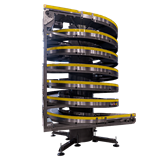
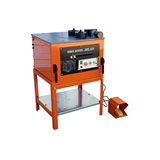

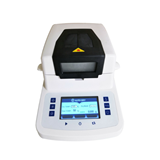


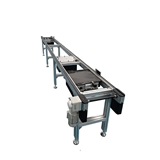

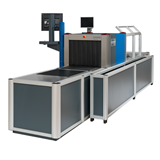
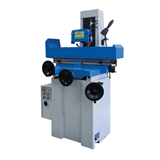
-160x160-state_article-rel-cat.png)





